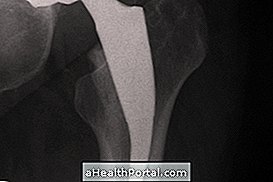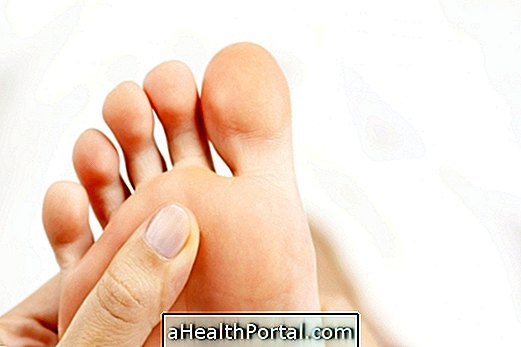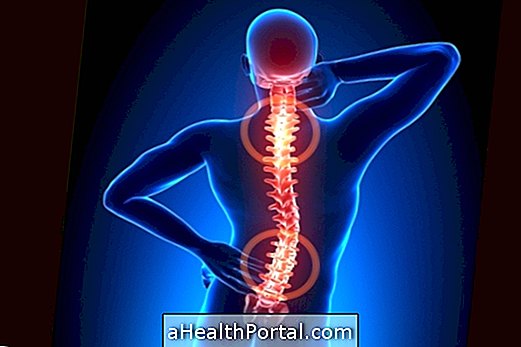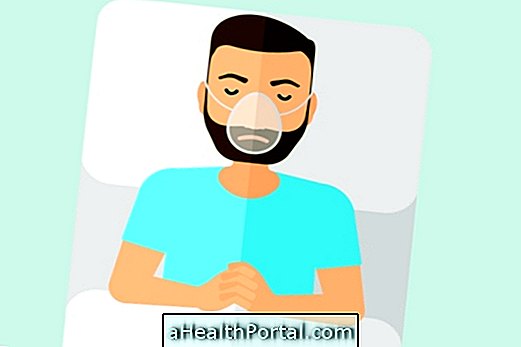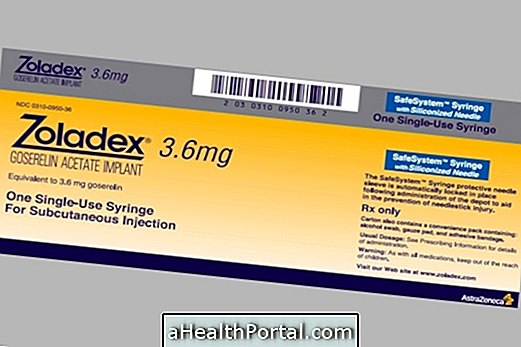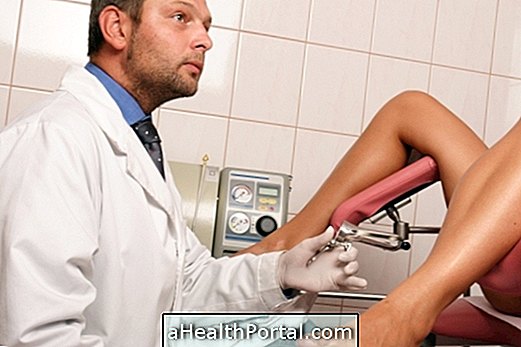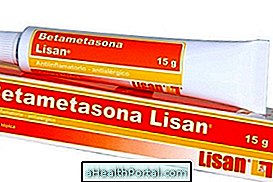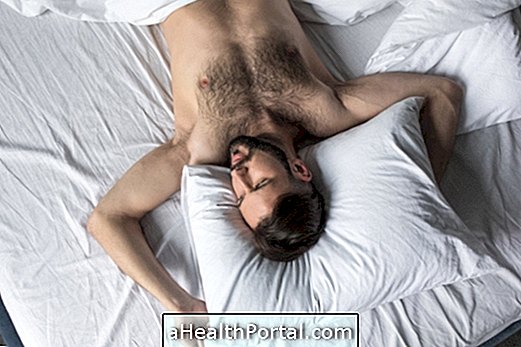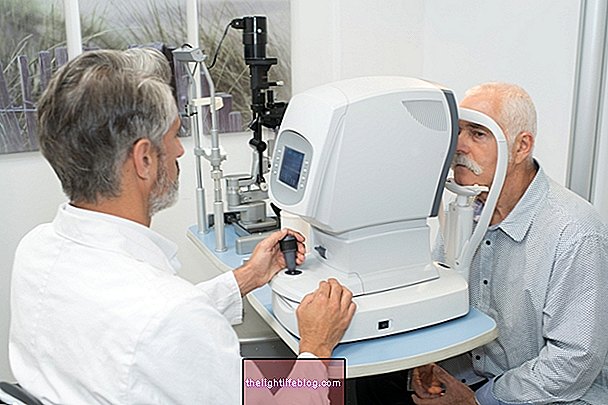There are several causes for heel pain, from changes in the shape of the foot or the way of treading, overweight, spur to the calcaneus, a stroke, to more severe inflammatory diseases such as plantar fasciitis, bursitis or gout, for example, which can both cause constant pain or only when stepping, as well as arising on one or both feet.
To relieve pain, it is recommended to consult with the orthopedist and accompanying physiotherapist, who can identify the cause, and indicate appropriate treatments, which may be the use of anti-inflammatory medicines, foot orthoses, rest and techniques of physiotherapy for postural correction, stretching and joint strengthening.
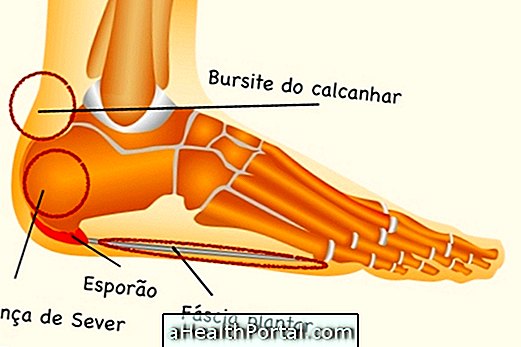
Some common causes of heel pain and what to do in each case include:
1. Biomechanical changes
Changes in the shape of the foot or in the form of walking, whether born with the person or acquired throughout life, such as flat or flat feet, in addition to varicose veins or valgus are important causes of heel pain. This happens because, as these modifications cause bad support of the foot on the floor, they can end up overloading some joint or bone that should not.
- What to do : In some cases, postural correction exercises, use of orthoses and insoles, or even surgery may be indicated, however, it is necessary to follow the orthopedist and the physiotherapist to evaluate the changes and plan the best treatment.
It should be remembered that women who wear jumps often cause a momentary "deformity" in the biomechanics of the feet, which can compromise the tendon and calf muscle, which also causes heel pain.
2. Plantar fasciitis
Plantar fasciitis is inflammation of the tissue covering the entire sole of the foot, usually caused by repetitive traumas or lesions in the plantar fascia, which is a fibrous and firm band that supports and maintains the plantar arch standing, which leads to inflammation local.
Some of its major causes include having heel spurs, standing for long periods of time, being overweight, having flat feet, and excessive physical activity. This inflammation usually causes pain under the calcaneus, which worsens in the morning when starting the gait, improves after the first steps and, in addition, can cause local swelling and difficulty walking or wearing shoes.
- What to do: stretching of the calf and sole of the foot, strengthening exercises, deep rubbing massage, infiltration with corticosteroids, insole footwear, radiofrequency at the site of pain, sleep splints are treatments that may be indicated. Some exercises include wringing a towel spread on the floor and picking up a marble.
Understand plantar fasciitis here.
3. Calcaneus Spur
It is a small fibrous projection that forms in the heel bone, and results from intense pressure and overload on the sole of the foot for long periods of time, so it is more common in people over 40, overweight people, use of inappropriate footwear, foot deformities or runners, for example.
Those who have spurs may have pain when they get up or walk, being common in the morning. In addition, it is very common that the spur is associated with the formation of plantar fasciitis, since the inflammation can extend to nearby structures.
- What to do : Spur treatment is usually done when there is local inflammation, especially when in conjunction with plantar fasciitis, and physician-directed use of anti-inflammatory, resting, and anti-inflammatory drugs is recommended. These measures are usually sufficient, and surgery for removal of the spur may be indicated, but rarely is necessary. Here are some homegrown strategies in this video:

4. Heel bursitis
The bursa is a small pocket that serves as a shock absorber that is located between the heel bone and the Achilles tendon, when it inflames there is pain in the back of the heel, which worsens when the foot is moved. This inflammation usually occurs in people who exercise or are athletes after a sprain or injury but can also happen due to the Haglund deformity that occurs when there is a bone prominence in the upper part of the calcaneus, causing pain in the heel but in the back of the heel, near the Achilles tendon.
- What to do: You may need to take anti-inflammatories, use ice packs, decrease workouts, use of physiotherapy equipment, stretches, and exercises.

5. Sever's disease
Sever's disease is pain in the region of the calcaneus growth plate that affects children who practice impact exercises such as running, jumping, artistic gymnastics, and dancers who dance with many heels on their toes.
- What to do: you should reduce the intensity of the training and the jumps to avoid its aggravation, in addition it is possible to put some ice cubes rolled in a napkin for 20 minutes and to use a heel to support the heel of the shoes and not to walk barefoot . Always start the workout with a 10 minute walk.
If you want to know more about this disease, read: Sever's Disease - Symptoms and Treatment
6. Bang
Heel trauma, caused by a blow, a jump, during a run or due to wear and tear on the shoes, can cause pain in the area, which can last for several days, as injuries to the skin, muscles and bones of the area can occur.
- What to do : It is recommended to rest for a period, which varies according to the intensity of the injury, but can be between 2 days to 1 week. If the pain persists, an evaluation by the orthopedist is necessary to see if there are more serious injuries, and the need for anti-inflammatory drugs or immobilization of the place.
A good tip to recover faster is to make compresses of cold water, to decrease inflammation and swelling, and to choose comfortable shoes.
7. Gout
Gout, or gouty arthritis, is an inflammatory disease caused by excess uric acid in the blood, which can accumulate in the joint and cause inflammation and intense pain. Although it is most common in the big toe, gout can also arise in the heel, since the feet are the main sites for uric acid buildup.
- What to do : The treatment for gout attacks is physician-directed, and involves anti-inflammatory drugs, such as Ibuprofen or Naproxen, for example. Then follow-up with the rematologist, who can also prescribe medications to control uric acid levels in the blood to prevent further seizures and prevent complications.
Understand better what it is and how to identify gout.
How to know the cause of my pain
The best way to know the cause of the pain in the heel is to try to find the exact location of the pain and try to identify some cause such as having increased physical activity, having started a new sport, or being hit in the same place or something. Placing a cold compress on the pain site may relieve symptoms as well as soak your feet in a bowl of warm water.
If the pain persists for more than 1 week you should go to the orthopedist or physiotherapist for the cause to be identified and treatment initiated.
